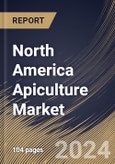Genomic research offers insights into the genetics of bees, their resilience to diseases, and their adaptation to environmental conditions. This knowledge contributes to breeding programs aimed at developing resilient bee populations. Selective breeding based on genomic research aims to enhance traits associated with disease resistance, thereby strengthening bee colonies against common pathogens. Innovations in bee nutrition involve research into alternative food sources for bees.
Supplements and formulations that enhance the nutritional content of bee diets contribute to colonies' overall health and vigor. The development of pollen substitutes provides beekeepers with alternatives to natural pollen, addressing nutritional gaps and supporting bee colonies during periods of scarcity. Additionally, Beekeeping contributes to biodiversity conservation by supporting the pollination of wild plants. This, in turn, aids in sustaining diverse ecosystems and habitats. Beekeepers often engage in habitat restoration initiatives, creating conducive environments for bees and pollinators. Such efforts play a role in mitigating the impact of habitat loss.
Pollination is an essential process that bees perform, and their assistance is critical in cultivating numerous crops. Beeswax, derived from beekeeping activities, is known for its emollient and skin-conditioning properties. It is commonly used in cosmetics such as lip balms, creams, and lotions. The demand for beeswax as a natural ingredient in cosmetics could drive growth in the market. As per the data provided by the International Trade Administration in 2021, the cosmetics sector in Canada generated approximately USD 1.24 billion in revenue. Industry revenue is expected to reach USD 1.8 billion by 2024. Hence, the growing food and cosmetics sectors in North America will assist in the growth of the regional market.
The US market dominated the North America Apiculture Market, by Country in 2022, and would continue to be a dominant market till 2030; thereby, achieving a market value of $2,825.3 Million by 2030. The Canada market is experiencing a CAGR of 7.5% during (2023 - 2030). Additionally, The Mexico market would exhibit a CAGR of 6.5% during (2023 - 2030).
Based on Application, the market is segmented into Food & Beverage, Pharmaceuticals, Personal Care & Cosmetics, and Others. Based on Type, the market is segmented into Honey, Royal Jelly, and Beeswax. Based on countries, the market is segmented into U.S., Mexico, Canada, and Rest of North America.
List of Key Companies Profiled
- Capilano Honey Ltd.
- YS Organic Bee Farms
- Dabur India Ltd.
- NOW Health Group, Inc.
- Koster Keunen, Inc.
- Barkman Honey, LLC
- Fairfield Organics, LLC
- Strahl & Pitsch, LLC.
- Miller's Honey Company
- Durham's Bee Farm, Inc.
Market Report Segmentation
By Application (Volume, kilo Tonnes, USD Billion, 2019-2030)- Food & Beverage
- Pharmaceuticals
- Personal Care & Cosmetics
- Others
- Honey
- Royal Jelly
- Beeswax
- US
- Canada
- Mexico
- Rest of North America
Table of Contents
Companies Mentioned
- Capilano Honey Ltd.
- YS Organic Bee Farms
- Dabur India Ltd.
- NOW Health Group, Inc.
- Koster Keunen, Inc.
- Barkman Honey, LLC
- Fairfield Organics, LLC
- Strahl & Pitsch, LLC.
- Miller's Honey Company
- Durham's Bee Farm, Inc.
Methodology

LOADING...








